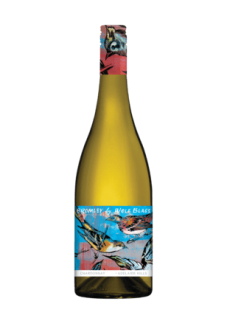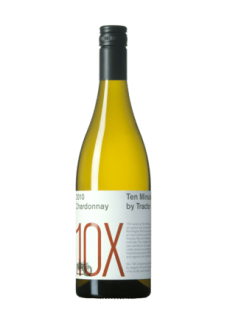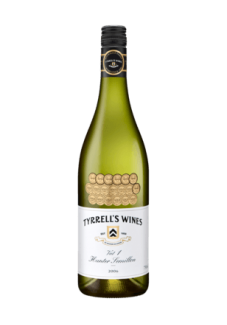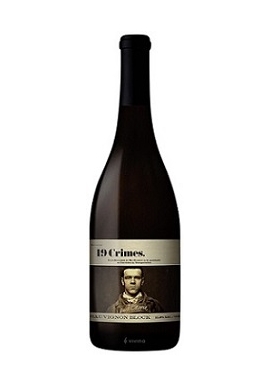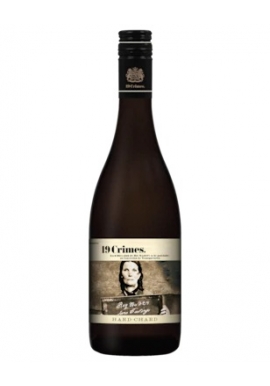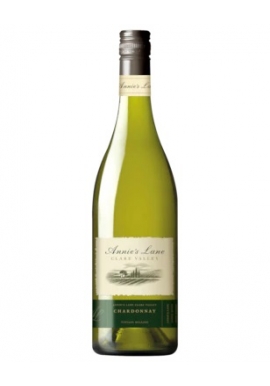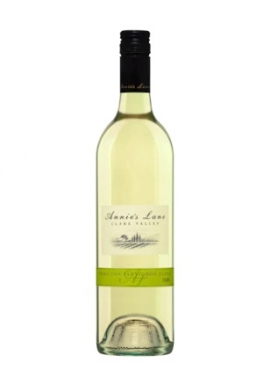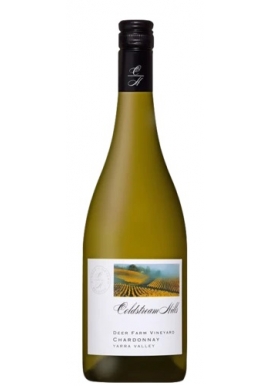WHITE WINE
-
AUSTRALIAN WHITE WINES
- Botrytis Sweet
- Chablis
- Chardonnay
- Chardonnay Unwood
- Chenin Blanc
- Colombard
- Dry Whites
- Fiano
- Frontignan
- Gewurztraminer
- Marsanne
- Moscato
- Petit Manseng
- Pinot Grigio
- Pinot Gris
- Riesling
- Roussanne
- Sauvignon Blanc
- Savagnin Blanc
- Semillon
- Spatlese Lexia
- Trebbiano
- Verdelho
- Vermentino
- Viognier
- White Burgundy
- White Lambrusco
-
AUSTRALIAN WHITE BLENDS
- Chardonnay Colombard
- Chardonnay Sémillon Sauvignon Blanc
- Chardonnay Semillon
- Chardonnay Semillon Verdelho
- Chardonnay Verdelho Sauvignon Blanc
- Colombard Sauvignon Blanc
- Dry White Riesling Gewurztraminer Pinot Gris
- Sauvignon Blanc Sémillon Viognier
- Semillon Sauvignon Blanc
- Sauvignon Blanc Sémillon Chardonnay Chenin Blanc
- Traminer Frontignac Riesling
- Traminer Riesling
- Viognier Roussanne
- Viognier Pinot Gris
- WHITE ~ ORGANIC WINES
- RARE ~ MUSEUM WINES
- AUSTRALIAN ALCOHOL FREE WHITE WINES
White wine grape varieties generally smell and taste like citrus and other tree fruit, like lemon, orange, grapefruit or apple.
In mature white wines, or in sweet white wines, we can often taste more exotic or tropical fruit, like pineapple, mango, apricot, pear, melon and lychees.
White wines also have odours and tastes such as mineral, spice...
White wine grape varieties generally smell and taste like citrus and other tree fruit, like lemon, orange, grapefruit or apple.
In mature white wines, or in sweet white wines, we can often taste more exotic or tropical fruit, like pineapple, mango, apricot, pear, melon and lychees.
White wines also have odours and tastes such as mineral, spice, herbs, tobacco, hay, yeast, honey, caramel and nuts.
The tastes comes from either the grape variety, the yeasts if indigenous yeasts are not used to start fermentation, the fermentation period, or the oak used for ageing.
WHITE WINE There are 37 products.
Subcategories
-
AUSTRALIAN WHITE WINES
Australian white wine grape varieties generally smell and taste like citrus and other tree fruit, like lemon, orange, grapefruit or apple. In mature white wines, or in sweet white wines, we can often taste more exotic or tropical fruit, like pineapple, mango, apricot, pear, melon and lychees. White wines also have odours and tastes such as mineral, spice, herbs, tobacco, hay, yeast, honey, caramel and nuts. The tastes comes from either the grape variety, the yeasts if indigenous yeasts are not used to start fermentation, the fermentation period, or the oak used for ageing.Chancellors Cellars is proud to present an extensive list of Australian and International wines.
Unlike Europe, Australia is not governed by the strict wine laws imposed on European wine growers, who are restricted to growing certain grapes in certain areas. The result is that while France for example has thirteen (13) wine growing regions, Australia has in excess of thirty five (35). The freedom to experiment outside these restriction in the Antipodean New World has also led to an entirely fresh crop of tastes and textures of wine. Chancellors Cellars aims is to provide you with a fascinating tour of both International and Australian wines.Of course, each state and within that state in Australia, or in the case International wines regarding provinces each region has its unique soil, climate and levation that gives that varietal wine its uniqueness, flavour, texture, and palate. For many wine connoisseurs who may suggest which wines to choose to drink can be very helpful.
These consist of wines for immediate drinking which generally applies to cheaper, budget quaffing wines - Hunter Verdelho, Barossa Semillon, almost all Riesling, Adelaide Hills Sauvignon Blanc, most Chardonnay, Chambourcin, Pinot Noirs, Shiraz, and Cabernets. No doubt there are wines for the medium term that require storage and cellaring from five (5) to ten (10) years. Generally this applies to medium priced wines such as Margaret River Chardonnay, Clare and Eden Valley Rieslings, Hunter Semillon, South Australia Shiraz, Margaret River Cabernet, Great Western wines from Bests, Central Victoria wines from Tahbilk and Heathcote wineries, Barossa Shiraz, McLaren Vale Shiraz.Wines for longer term storage that is ten years plus (10 plus). This generally applies to the best examples of each being: Hunter Semillon, Leeuwin Estate Chardonnay, Clare and Eden Rieslings, Tahbilk Marsanne, Rutherglen special and rare sweeties which will last for ever. Yarra Pinot Noir, Yarra Cabernet blends, Bests Great Western range Reds, Coonawarra cabernets especially Wynns and Barossa Shiraz. Overall the Western Australia wine region consists of the following:- Swan District, Perth Hills Blackwood Valley, Geographe, Great Southern Margaret River and Pemberton, these region represent some of the most revered wines made. critics the world over applaud the cabernets produced in Margaret River.
-
AUSTRALIAN WHITE BLENDS
Australian white wine blends is an experimentation with alternative white grapes which has grown apace in Australia over the past several decades. This has sprung first from a curiosity on the part of winemakers, which has in turn affected and enthused wine drinkers. Variety is the spice of life, and the saying was never truer than for wine.
The blending of Australian white wines can develop an interesting array of flavours which can generally develop broad, low acid, bone dry whites that are not really built for aging. Whereas some with a Marsanne, Roussanne grape can develop rich and textural characteristics.
Who wants a steady diet of Chardonnay, Sauvignon Blanc and Riesling? In the white Italian grape variety alone, we now have people making interesting wine from cortese, arneis,picolit, and verduzzo, as well as pinot grigio grapes. And on the French side we have Petit Manseng, viognier,the more established Colombard, Chenin Blanc, Gewurztraminer and more.
-
WHITE ~ ORGANIC WINES
Organic wines are environmentally friendly, and also a great way to enjoy wine as nature intended.
In accordance with the Australian Certified Organic Standard, makers of green (organic) wine don't apply any synthetic chemicals to the soil, vines or wine. Their wines must contain no more than half the amount of preservative found in conventional wines.
The organic wine movement started in Australia in 1971 when Gil Wahlquist planted the seeds of organic wine and established Botobolar vineyard in Mudgee. In 1984 it became the first certified organic vineyard in the country. So what all the fuss about? Organic wine is based on a number of key criterias these are:
. All natural
. Produced using environmentally sustainable farming methods
. Grown without artificial pesticides, herbicides, fungicides or fertilisers
. Contains no genetically modified (GM) ingredients
. Contains minimal or no added preservatives (good news if you're sensitive to sulphur dioxid
. Must be genuine to display an official 'certified organic' logoMinimal intervention helps to produce a wine that's as close as possible to nature. Where possible the winemaker can use existing wild yeast for fermentation, rather than introduce a strain. The Nature's Step Organic Wild Ferment Sauvignon Blanc is an example of how naturally occurring yeast can bring out the wine's distinctive flavour and aroma.
Environmental sustainability is an important requirement of organic winemaking. The winemakers at Gemtree Vineyards in McLaren Vale for example have taken green to the extreme by creating a 10-hectare wetland area for native plants, frogs, birds and other animals.
Organic winemaking has come a long way since early, and often disappointing, attempts to produce an organic or green wine of comparable quality to conventional wine.
Australia produces several fine certified organic preservative-free wines, including the Temple Bruer Preservative Free Cabernet Merlot, which is especially good news for people who are sensitive to the preservative sulphur dioxide.Finally, in Australia there are three agencies that certify organic grape and wine producers.
-
RARE ~ MUSEUM WINES
Chancellors Cellars specialises in back vintage Australian and International fine wines. Our back vintage depth enables our customers to build wine lists with a point of difference, creating opportunities to provide customers with a superior wine experience.All these old rare and museum wines are incredible gems which reflect their heritage.
-
AUSTRALIAN ALCOHOL...
Non-alcoholic wine is made in exactly the same way as regular wine, in fact it starts off as regular, alcoholic wine. Then de-alcolising of the wine commences when experts gently remove the alcohol by using one or more highly technical methods leaving behind less that 0.05% ABV which is about the same as a ripe banana
There are three popular methods of alcohol removal which include a spinning cone, filtration and distillation. The entire process of making non-alcoholic wine is a craft (in the same way making alcoholic wine is). The wine components are carefully deconstructed retaining all the flavours and characters and them built back together excluding the alcohol. It is a highly technically and complex process but the end result when done well is a non-alcoholic wine that tastes, smells and has the same mouthfeel as the wine we are used to drinking.
The taste of non-alcoholic wine compared to alcoholic wine, many wines are virtually identical. Some of the wines taste just like their alcoholic versions include the Newblood Shiraz, Giesen 0% Marlborough Sauvignon Blanc, and the McGuigan Zero Dry Sparkling.
Interestingly non alcoholic wine may have less calories, as most of the calories in alcoholic drinks come from the alcohol itself, so most non-alcoholic wines contain around a third or even half the calories of standard wine.
Non alcholic beverages can be delicious and also an healthier alternative than regular wine. Many are rich in anti-aging properties such as antioxidants, such as the plus and minus range which include added benefits of antioxidant rich grape seed extract to their wines, or Wild Life Botanicals which include a host of vitamins and minerals. Non-alcoholic wines contain less calories which is better for our waistline, but we all know alcohol is simply not good for us.
One of the earliest known de-alcoholisation processes came from Carl Jung in Germany and dates back to 1908. Carl Jung patented his process and the famous winery not only makes their own range of non-alcoholic wine, they are remove the alcohol for many other brands.
-
$115.95
19 Crimes Block Sauvignon Blanc 750ml x 6... 19 Crimes Block Sauvignon...
19 Crimes Block Sauvignon Blanc is zesty, vibrant and light but unique in character, this approachable Sauvignon Blanc is filled with aromas of passionfruit, grapefruit, gooseberry and guava. 19 Crimes Block Sauvignon Blanc is...
-
$115.95
19 Crimes Hard Chardonnay 750ml x 6... 19 Crimes Hard Chardonnay...
19 Crimes Hard Chardonnay straw yellow colour with lifted aromas of stonefruits, peaches & cream, and spicy oak. 19 Crimes Hard Chardonnay straw...
-
$179.95
Abel's Tempest Chardonnay 750ml x 6... Abel's Tempest Chardonnay...
Abel's Tempest Chardonnay spent nine months maturation in a combination of new and seasoned French oak. Abel's Tempest Chardonnay palate is full and generous with a soft texture, underpinned by lemon citrus fruits, nectarine flavours and the subtle oak adds beautiful complexity. Abel's Tempest Chardonnay spent nine...
-
$145.95
Annie's Lane Chardonay 750ml x 6 Clare... Annie's Lane Chardonay...
Annie's Lane Chardonnay produce has toasty nutty oak flavours that perfectly complement the rich melon, baked fig varietal characters of the grape in this soft, full-flavoured Chardonnay. Annie's Lane Chardonnay produce has...
-
$145.95
Annie's Lane Riesling 750ml x 6 Clare... Annie's Lane Riesling 750ml...
Annie's Lane Riesling from the Clare Valley Region of South Australia shows attractive varietal aromas of citrus and floral notes. Annie's Lane Riesling from the Clare...
-
$145.95
Annie's Lane Semillon Sauvignon Blanc... Annie's Lane Semillon...
Annie's Lane Semillon Sauvignon Blanc from the Clare Valley Region of South Australia has subtle yet pungent aromas of lemon and citrus, this is a clean and refreshing wine Annie's Lane Semillon Sauvignon Blanc...
-
$89.95
Bindi Chardonnay 2002 Macedon Ranges... Bindi Chardonnay 2002...
Bindi produces a complex rich and notably long lived Chardonnay. Mostly deeply coloured of all wines, and showing what appears to be some botrytis influence. Bindi Chardonnay has bright and fresh aromatics with lemon grass, wild flowers, wet pavement and intensity of stone fruit and citrus. Power-packed palate with concentration and vitality - acidity... Bindi produces a complex rich and...
-
$309.95
Coldstream Hills Rising Vineyard Varietals... Coldstream Hills Rising...
Coldstream Hills Rising Vineyard Varietals Chardonnay has distinctive notes of nectarine, citrus blossom and quince. Coldstream Hills Rising Vineyard Varietals Chardonnay secondary notes of nougat and wet slate add complexity with subtle French oak providing support in the background. Coldstream Hills Rising Vineyard...
-
$309.95
Coldstream Hills Single Vineyard Deer Farm... Coldstream Hills Single...
Coldstream Hills Single Vineyard from the Yarra Valley Region of Victoria,has been consistently producing excellent Yarra Valley Chardonnay for years and if anything it keeps getting better. Stone fruit and grapefruit characters are supported by creamy nutty oak. Coldstream Hills Single Vineyard from...
ABN: 11 806 263 393
Liquor Licenses
337 526 06
360 674 16

